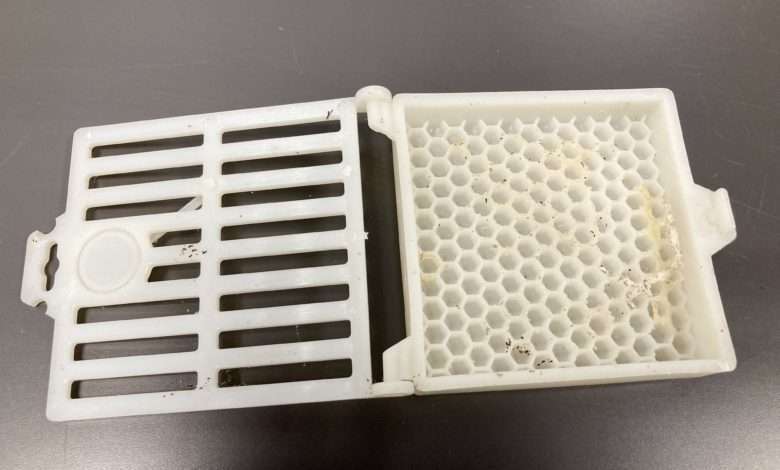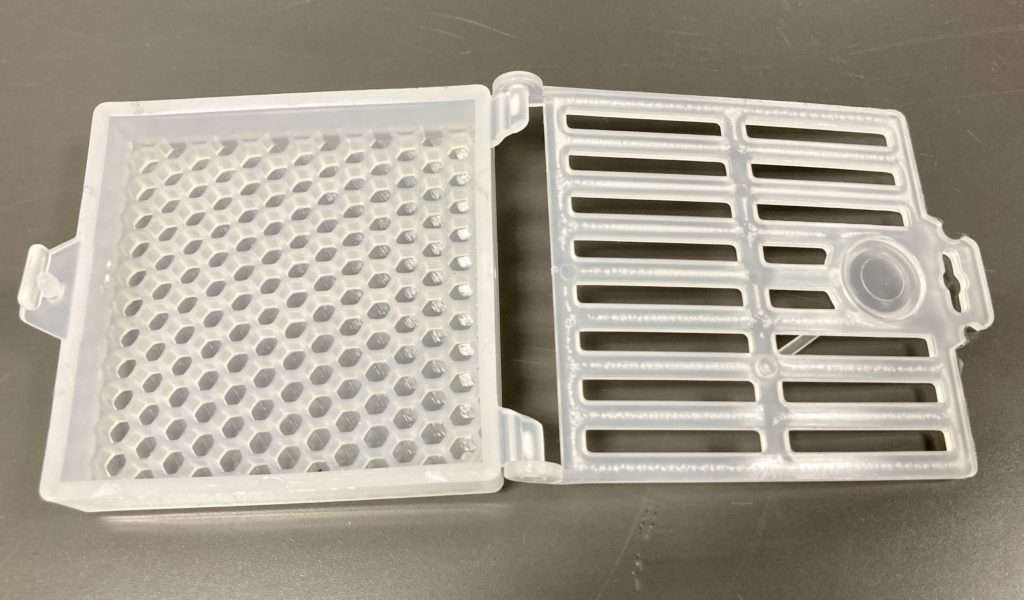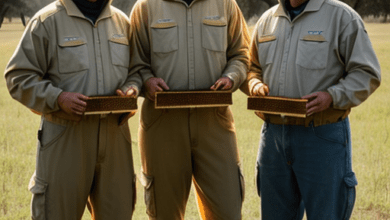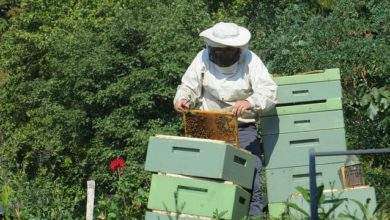What are Scalvini Queen Cages and How Do They Benefit Beekeepers?

Introduction to Scalvini Queen Cages
When it comes to beekeeping, the importance of a strong and healthy queen bee cannot be overstated. Queen bees are the backbone of a thriving hive, responsible for laying thousands of eggs and maintaining the overall health and productivity of the colony. This is where Scalvini Queen Cages come into play. These innovative tools provide beekeepers with a reliable method for rearing and controlling queen bees, ultimately leading to more robust and successful bee colonies.
What are Scalvini Queen Cages?
Scalvini Queen Cages, also known as queen cups, are small, cylindrical cages used in the process of queen rearing for honeybee colonies. These cages are designed to house queen larvae during their development, providing them with a safe and controlled environment for optimal growth.


The Purpose of Scalvini Queen Cages
The purpose of Scalvini Queen Cages is to facilitate the rearing of queen bees in a controlled and efficient manner. By isolating queen larvae in these cages, beekeepers can ensure that they receive the proper nutrition, protection, and temperature regulation necessary for healthy development.
History of Scalvini Queen Cages
Scalvini Queen Cages were first introduced in the early 1900s by Italian beekeeper Giovanni Scalvini. Scalvini was known for his innovative techniques and tools that revolutionized beekeeping practices.
The queen cages were designed to safely isolate and transport queen bees during hive manipulations and bee breeding. These cages were initially made of wood and wire mesh, providing ventilation and protection for the queen bee.
Over the years, Scalvini Queen Cages evolved in design and materials, with modern versions now made of durable plastic. The use of Scalvini Queen Cages has become widespread among beekeepers around the world due to their effectiveness and convenience.
The Unique Features of Scalvini Queen Cages
Scalvini Queen Cages are a revolutionary method of queen rearing that sets them apart from other traditional techniques. These cages are specifically designed to provide a controlled environment for queen bees to develop and mature, resulting in stronger and more productive queen bees.
One of the key differences of Scalvini Queen Cages is their size and shape, which allows for optimum queen bee development without the risk of overcrowding or interference from worker bees. The materials used in Scalvini Queen Cages are carefully selected to ensure the comfort and safety of the queen bee during the rearing process.
How Scalvini Queen Cages differ from other queen rearing methods
While there are various methods for queen rearing in beekeeping, Scalvini Queen Cages stand out for their simplicity, reliability, and effectiveness. Unlike traditional methods that may require more hands-on intervention, Scalvini Queen Cages offer a streamlined approach to rearing queen bees, resulting in higher success rates and healthier colonies.
The Benefits of Using Scalvini Queen Cages
- Scalvini queen cages offer improved queen protection and safety. The cages provide a barrier that shields the queen bee from potential harm, such as attacks from worker bees or unwanted pests. This protection ensures that the queen bee can continue her essential duties without any interruptions.
- Scalvini queen cages can help increase hive productivity. By creating a controlled environment for the queen bee, beekeepers can optimize breeding conditions and encourage the production of healthy new bees. This results in a stronger and more productive hive overall.
- Scalvini Queen Cages contribute to the enhancement of genetics and desirable traits within bee colonies. Through careful selection and controlled mating, beekeepers can foster the development of strong, disease-resistant, and productive bees, ultimately leading to more resilient and successful hives.
- Scalvini queen cages offer enhanced breeding control. Beekeepers can easily introduce new queen bees into the hive or remove unwanted queens without causing disruption to the hive dynamic. This level of control allows beekeepers to manage the hive population effectively and maintain a harmonious bee colony.
- Minimization of stress on the queen bee. In traditional methods of queen rearing, queen bees may experience increased stress and disruption during the mating process. Scalvini Queen Cages help to minimize these stressors by providing a stable and protected environment for the queen, allowing her to develop and mate with minimal disturbances.
- In traditional methods of queen rearing, queen bees may experience increased stress and disruption during the mating process. Scalvini Queen Cages help to minimize these stressors by providing a stable and protected environment for the queen, allowing her to develop and mate with minimal disturbances.
- Using Scalvini queen cages can help reduce the risk of swarming. Swarming occurs when a hive becomes overcrowded, prompting a queen bee to leave with a portion of the worker bees to form a new colony. By providing a secure and stable environment for the queen bee, beekeepers can prevent swarming and maintain the hive’s population and productivity.
Conclusion
Scalvini queen cages offer numerous benefits for beekeepers looking to protect and manage their queen bees effectively. By utilizing these cages, beekeepers can ensure the health and productivity of their hives while maintaining control over breeding and population management.
FAQ:
What are Scalvini Queen Cages?
- Scalvini Queen Cages are specialized devices used in the process of queen rearing, designed to safely house and protect developing queen bees.
How do Scalvini Queen Cages benefit beekeepers?
- Scalvini Queen Cages offer a range of benefits for beekeepers, including increased queen bee production, improved genetics and traits in bee colonies, enhanced control over the mating process, minimization of stress on the queen bee, and an overall improvement in hive productivity and health.
How do Scalvini Queen Cages work?
- Scalvini Queen Cages are designed with small openings that allow worker bees to feed the queen and keep her protected while contained. The cages are typically made of durable materials such as plastic or metal, ensuring the safety of the queen bee during handling.

When should Scalvini Queen Cages be used?
- Scalvini Queen Cages are commonly used during hive maintenance, hive splits, queen introduction, or when transporting queen bees to new colonies. They can also be used to isolate a queen bee temporarily for inspection or breeding purposes.
Are Scalvini Queen Cages reusable?
- Yes, Scalvini Queen Cages are reusable and can be cleaned and reused multiple times. This makes them a cost-effective and sustainable solution for beekeepers looking to protect and manage their queen bees.
How do beekeepers introduce a queen bee into a new colony using Scalvini Queen Cages?
- To introduce a queen bee into a new colony, beekeepers can place the queen in a Scalvini Queen Cage and insert it into the hive. This allows the worker bees to become accustomed to the queen’s pheromones before releasing her into the hive.
How do Scalvini Queen Cages differ from other queen rearing methods?
- Unlike traditional methods that may require more hands-on intervention, Scalvini Queen Cages offer a streamlined approach to rearing queen bees, resulting in higher success rates and healthier colonies.
Why are Scalvini Queen Cages important in beekeeping?
- Scalvini Queen Cages are important in beekeeping as they provide beekeepers with a reliable method for rearing and controlling queen bees, ultimately leading to more robust and successful bee colonies.
Where can beekeepers purchase Scalvini Queen Cages?
- Scalvini Queen Cages are available for purchase at beekeeping supply stores, online retailers, and directly from beekeeping equipment manufacturers. Beekeepers can choose from a variety of sizes and styles to suit their specific beekeeping needs.




